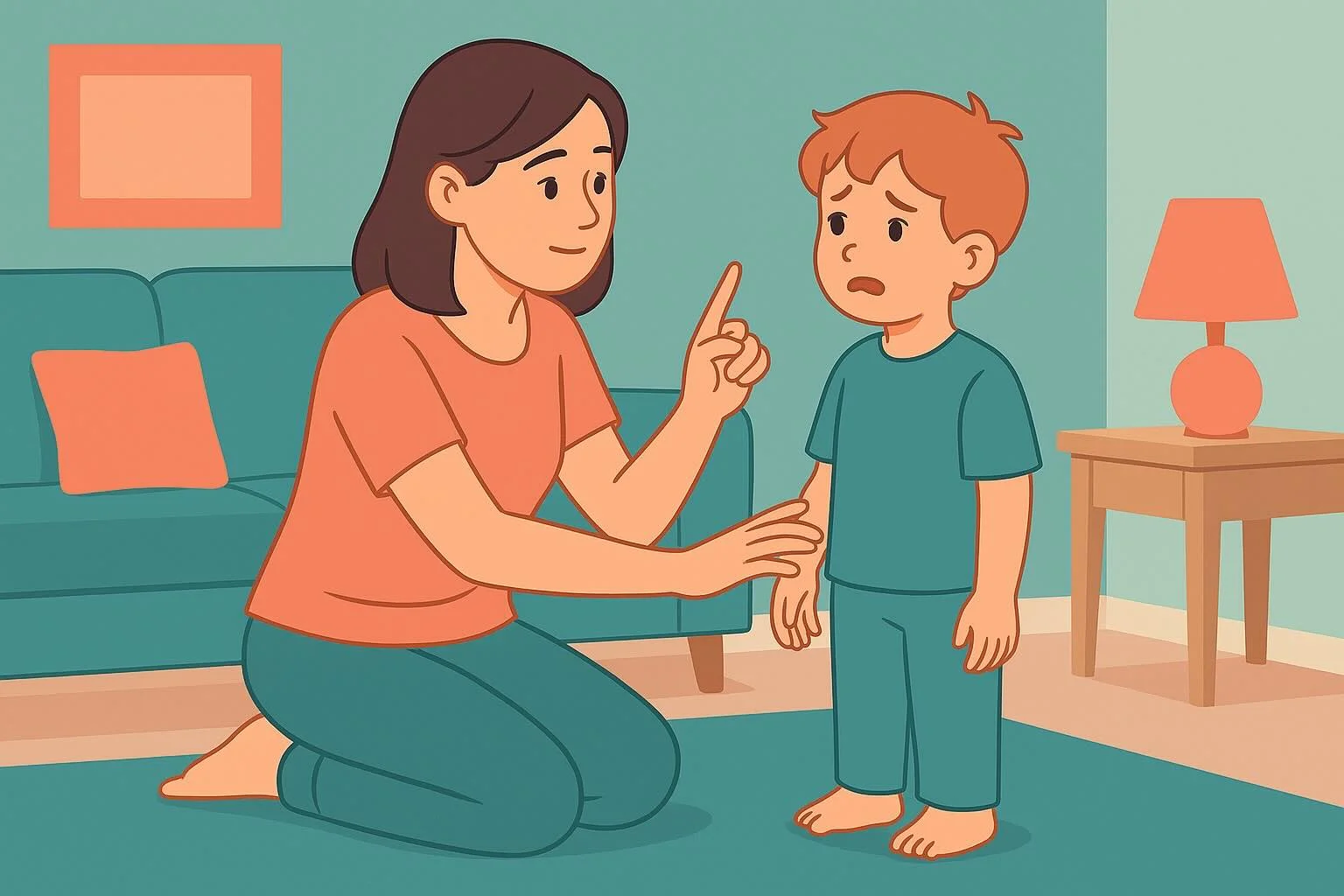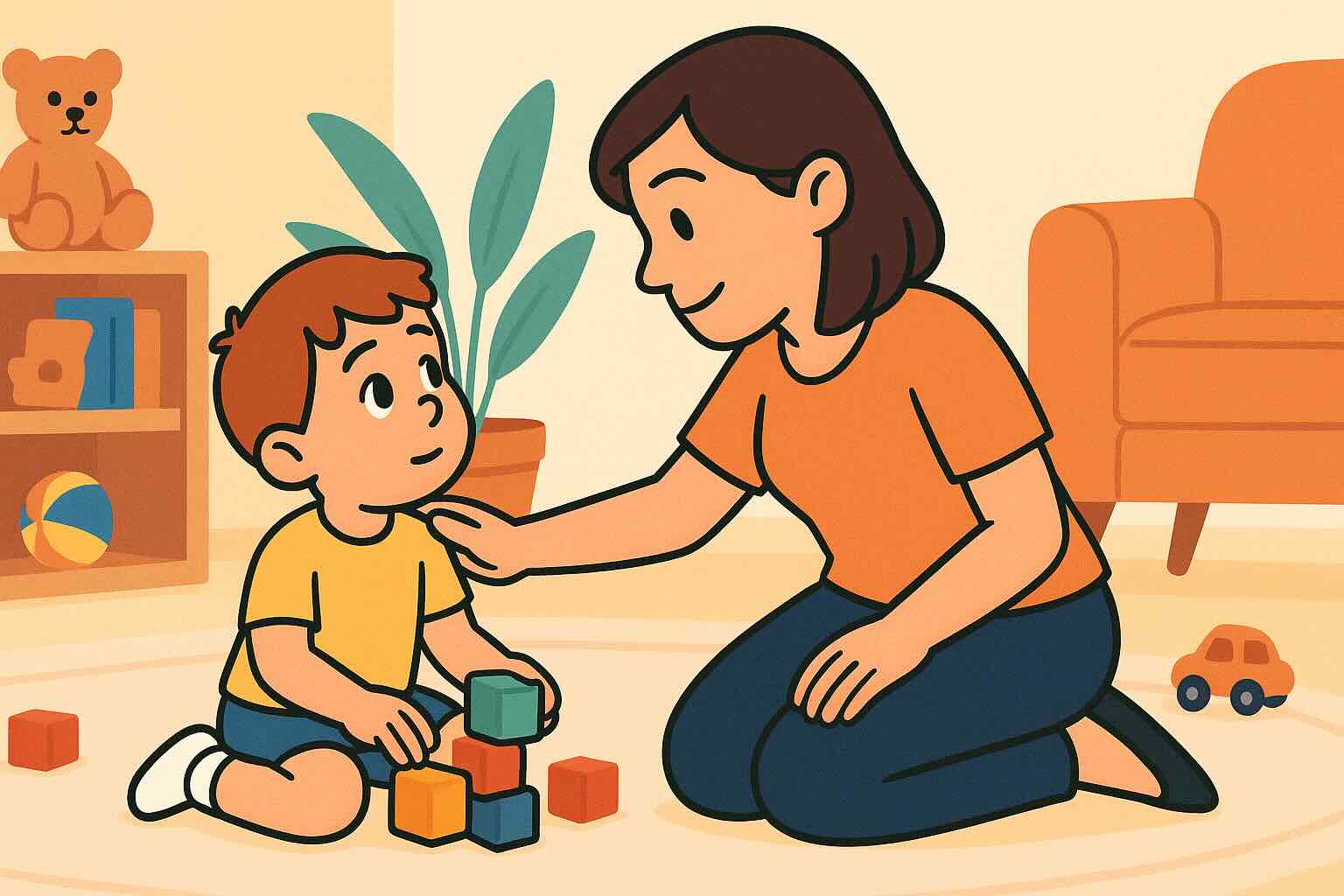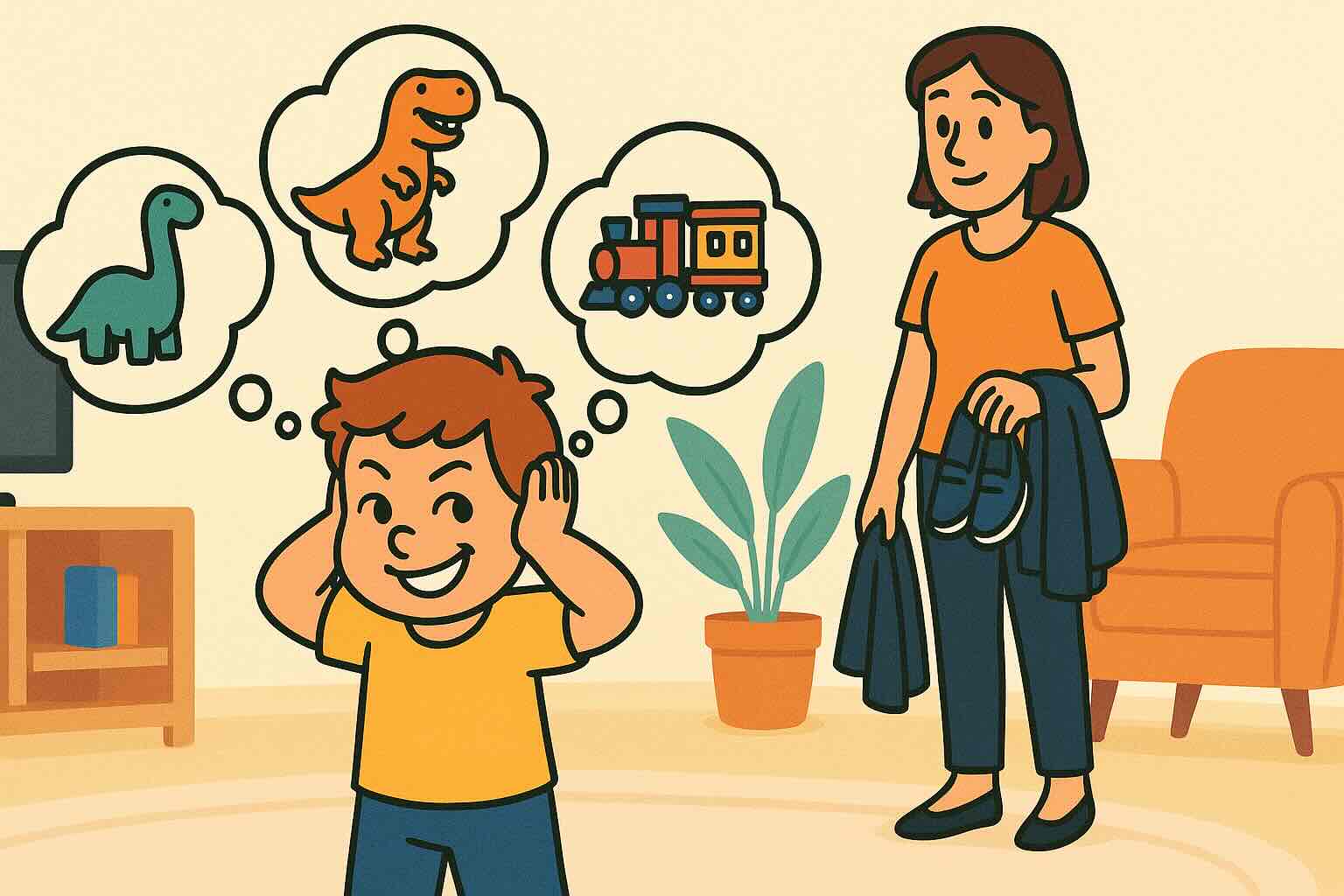Natural Consequences vs Punishment: Teaching Responsibility

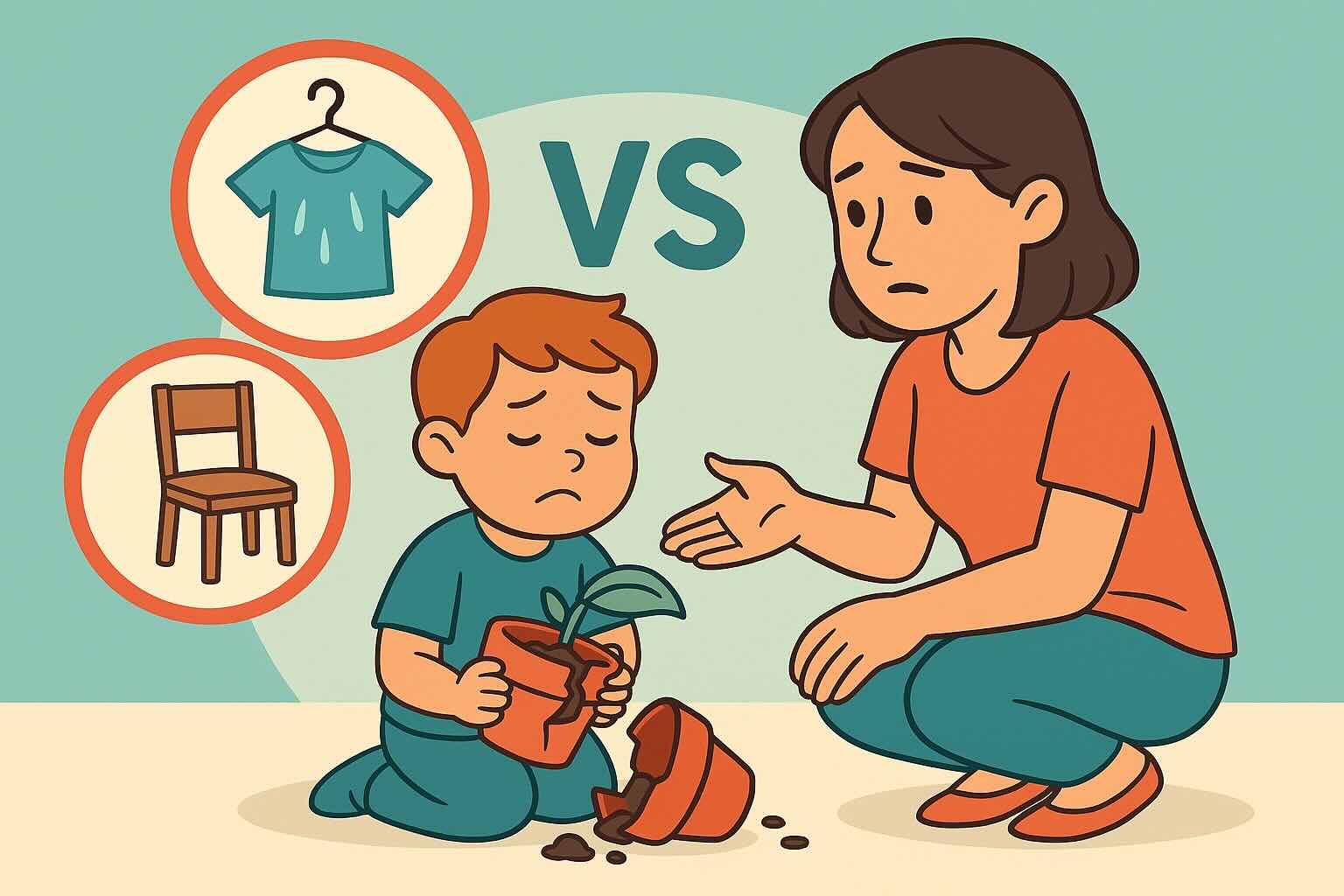
Picture this: Your 4-year-old refuses to wear a coat on a chilly morning. Do you battle for 20 minutes, threaten to take away screen time, or simply let them experience being cold? The choice you make reveals whether you're using natural consequences or punishment - and that difference shapes how your child learns about responsibility and decision-making.
Many parents unknowingly undermine their child's natural learning process by jumping in with punishments that have nothing to do with the actual problem. But there's a more effective way: allowing natural consequences to teach while you provide loving support and guidance.
This guide will help you understand the crucial difference between natural consequences and punishment, and show you exactly how to use this powerful parenting tool with children ages 3-7.
What You'll Learn in This Guide
- The Science Behind Learning - How children's brains learn best from experience
- Natural vs. Logical vs. Punishment - Understanding the three different approaches
- When to Step In (and When Not To) - Safety guidelines and judgment calls
- Age-Specific Applications - Different approaches for 3-4 vs. 5-7 year olds
- Common Situations and Solutions - Practical examples for everyday challenges
- Supporting Your Child Through Consequences - How to help without rescuing
- Building Problem-Solving Skills - Using consequences to develop thinking abilities
Estimated reading time: 11 minutes
How Children Learn: The Science of Consequences
Your Child's Brain and Cause-and-Effect Learning
Children ages 3-7 are in a crucial developmental period for understanding cause and effect. Their brains are wired to learn through experience, not through lectures or imposed consequences that don't make logical sense.
Research shows that children learn best when:
- Consequences are immediately connected to their actions
- They can see the logical relationship between choice and outcome
- They feel supported, not shamed, during the learning process
- They have opportunities to try again and practice new choices
Why Natural Learning Works Better Than Imposed Punishment
When consequences flow naturally from a child's choices, several important things happen:
Cognitive development: Children develop better reasoning and problem-solving skills Internal motivation: They learn to make good choices for their own benefit, not to avoid punishment Emotional regulation: They experience manageable disappointment and learn to cope with natural life challenges Self-confidence: They develop trust in their own ability to learn and grow from mistakes
Understanding the Three Types of Consequences
Natural Consequences: Life's Built-In Teachers
Natural consequences happen automatically as a result of behavior, without any parent intervention. They're the world's way of teaching children about how things work.
Examples of natural consequences:
- Child forgets their lunch → feels hungry
- Child doesn't wear warm clothes → feels cold
- Child doesn't put toys away → toys get lost or broken
- Child stays up too late → feels tired the next day
- Child is unkind to friends → friends don't want to play
Characteristics of natural consequences:
- Happen without parent involvement
- Are directly related to the child's choice
- Teach about the real world
- Build intrinsic motivation
- Feel fair to the child (even if unpleasant)
Logical Consequences: Parent-Created Learning Opportunities
Sometimes natural consequences aren't available or appropriate, so parents create logical consequences that maintain the teaching value while ensuring safety and appropriateness.
Examples of logical consequences:
- Child misuses a toy → toy gets put away temporarily
- Child makes a mess → child cleans it up
- Child refuses to get ready → faces being late or missing an activity
- Child is rough with pet → supervised interactions until they can be gentle
Characteristics of logical consequences:
- Created by parents but directly related to the behavior
- Reasonable and proportionate
- Focused on teaching, not punishing
- Delivered calmly and matter-of-factly
- Include opportunities to try again
Punishment: The Approach That Backfires
Punishment involves imposing an unpleasant consequence that's not directly related to the behavior, with the goal of making the child feel bad enough to change.
Examples of punishment:
- No TV because you didn't brush your teeth
- No dessert because you hit your sister
- Time out because you were loud
- Taking away toys because you didn't listen
Why punishment is less effective:
- Doesn't teach the connection between choice and outcome
- Often triggers resentment and power struggles
- Teaches children to avoid getting caught rather than making good choices
- Focuses on external control rather than internal motivation
- Can damage the parent-child relationship over time
When to Use Natural Consequences (and When Not To)
Perfect Situations for Natural Consequences
Safety is not at risk: The consequence won't cause serious harm Connection is clear: Child can understand the relationship between choice and outcome Timing is immediate: The consequence happens soon enough for the child to make the connection Learning is possible: The child is developmentally capable of understanding the lesson
When to Step In Instead
Safety concerns: Any situation that could cause physical harm Other people significantly affected: When the natural consequence would be unfair to others Consequences too severe: When the natural result would be disproportionate to the child's understanding Too delayed: When the consequence won't happen for days or weeks
Making the Decision: A Parent's Judgment Call
Ask yourself these questions:
- "What would happen if I don't intervene?"
- "Is my child safe?"
- "Will this teach the lesson I want them to learn?"
- "Can I stay emotionally neutral and supportive?"
- "Is this consequence reasonable for their age and development?"
Age-Specific Applications
Ages 3-4: Simple and Immediate
Young children need consequences that are immediate and easy to understand. Their cognitive abilities are still developing, so complex cause-and-effect relationships may be challenging.
Effective natural consequences for 3-4 year olds:
Getting dressed:
- Natural consequence: Feeling cold without warm clothes
- Parent support: "Brrr, you look cold! What could help you feel warmer?"
- What NOT to do: "I told you to wear your jacket! Now you're cold and it serves you right!"
Meal times:
- Natural consequence: Feeling hungry if they don't eat
- Parent support: Offer food at regular intervals without forcing
- What NOT to do: "Fine, no snacks if you don't eat dinner!" (this creates food power struggles)
Toy care:
- Natural consequence: Toy breaks or gets lost when not cared for
- Parent support: "Oh no, your toy broke. That's sad. What happened?"
- What NOT to do: "See what happens when you don't listen to me?"
Ages 5-7: Building Problem-Solving Skills
Children this age can understand more complex cause-and-effect relationships and can participate in problem-solving around consequences.
Effective natural consequences for 5-7 year olds:
Homework and responsibilities:
- Natural consequence: Teacher's response to incomplete work
- Parent support: "How did it feel when your teacher asked about your homework?"
- What NOT to do: Rescue them by doing homework for them or writing excuse notes
Friendship challenges:
- Natural consequence: Friends' reactions to unkind behavior
- Parent support: "I noticed Jamie didn't want to play today. What do you think happened?"
- What NOT to do: Force apologies or punish them for social difficulties
Morning routines:
- Natural consequence: Being late or missing preferred activities
- Parent support: "We missed story time because getting ready took a long time. What could we do differently tomorrow?"
- What NOT to do: Rush around solving everything for them
Common Situations and Practical Applications
Scenario 1: The Forgotten Lunch
What happens: Your 6-year-old forgets their lunch for the third time this week.
Punishment approach: "No screen time tonight since you can't remember your lunch!" Problems: No connection between forgetting lunch and losing screen time; doesn't solve the actual problem
Natural consequence approach: Let them experience being hungry at lunch time Parent support:
- When they call: "Oh, that must be uncomfortable to be hungry. What do you think you could do differently tomorrow?"
- After school: "How was lunch today?" (Let them share their experience)
- Problem-solve together: "What could help you remember your lunch?"
Safety note: Ensure the school has basic food available so no child goes truly hungry
Scenario 2: The Destroyed Art Project
What happens: Your 4-year-old tears up their sibling's art project in anger.
Punishment approach: "Go to time out! No toys for the rest of the day!" Problems: Doesn't repair the relationship or solve the underlying problem
Logical consequence approach: They need to make amends for the damage Parent support:
- "Your brother is sad about his picture. What happened?"
- "When we destroy someone's work, we need to help fix it. How can you help your brother?"
- "You seem angry about something. Let's talk about that after we solve this problem."
Scenario 3: The Messy Room
What happens: Your 5-year-old's room is consistently messy despite reminders.
Punishment approach: "I'm taking away all your toys if you don't clean your room!" Problems: Creates power struggle; doesn't teach organization skills
Natural consequence approach: Let them experience the natural results of a messy room Parent support:
- "I notice you can't find your favorite book. I wonder where it could be?"
- "It's hard to play when there's no space on the floor."
- When they ask for help finding something: "Where do you think we should look?"
When to step in: If the mess becomes unsanitary or unsafe
Scenario 4: The Dawdling Child
What happens: Your 3-year-old takes forever to get ready, making the family late.
Punishment approach: "No playground today since you made us late!" Problems: Playground has nothing to do with getting ready; misses teaching opportunity
Logical consequence approach: They experience the natural flow of time Parent support:
- "We need to leave in 5 minutes for you to have playground time."
- If they're not ready: "Shoes aren't on yet. I can help or you can do it yourself, but we're leaving at 8:30."
- If late: "We missed playground time because getting ready took longer. We can try again tomorrow."
Supporting Your Child Through Consequences
The Art of Empathetic Non-Rescue
The hardest part of using natural consequences is watching your child experience discomfort without jumping in to fix everything. Here's how to be supportive without rescuing:
Do:
- Acknowledge their feelings: "That feels disappointing"
- Stay emotionally available: "I'm here with you"
- Ask curious questions: "What do you think happened?"
- Express confidence in their ability to handle it: "You'll figure this out"
- Help them problem-solve for next time: "What could you do differently?"
Don't:
- Say "I told you so" or "You should have listened"
- Rush in to fix the consequence
- Make them feel ashamed: "That was silly of you"
- Turn it into a lecture about why you were right
- Add additional punishment on top of the natural consequence
Staying Emotionally Neutral
Your emotional state greatly impacts whether consequences become learning opportunities or shame experiences.
Helpful mindsets:
- "This is a learning opportunity, not a failure"
- "My child needs to experience manageable challenges to grow"
- "I can be supportive without rescuing"
- "Mistakes are part of learning"
Scripts for staying neutral:
- "Oh, that happened. How are you feeling about it?"
- "That seems uncomfortable. What do you think you could do?"
- "I notice [observation]. What do you notice?"
Building Problem-Solving Skills Through Consequences
The Reflection Process
After a natural consequence has occurred, help your child process the experience to build future decision-making skills.
Questions to promote reflection:
- "What happened here?"
- "How did that feel?"
- "What do you think caused that to happen?"
- "What could you do differently next time?"
- "How could I help you remember?"
Teaching Future Planning
Help children ages 5-7 begin to think ahead and make connections between current choices and future outcomes.
Planning conversations:
- "If you choose X, what do you think might happen?"
- "What do you need to remember to make this work?"
- "How will you know if your plan is working?"
Developing Internal Motivation
The ultimate goal is for children to make good choices because they understand the benefits, not because they fear punishment.
Strategies for building internal motivation:
- Notice natural positive consequences: "You remembered your lunch and felt good all day!"
- Help them connect choices to their own values: "You were kind to your friend and they wanted to keep playing"
- Ask about their own goals: "What do you want to happen?"
When Natural Consequences Aren't Working
Signs You May Need to Adjust Your Approach
- Child repeatedly experiences the same consequence without changing behavior
- Consequences are too severe or too mild for effective learning
- Child seems overwhelmed or anxious rather than learning
- Other family members are consistently negatively affected
- You find yourself getting angry or frustrated
Troubleshooting Common Issues
"My child doesn't seem to care about the consequences"
- Check if the consequence is meaningful to them
- Consider if they need more support or structure
- Evaluate if there are underlying issues (attention, sensory, emotional)
"I feel guilty watching them struggle"
- Remember that manageable struggles build resilience
- Consider whether your intervention would rob them of learning
- Distinguish between supporting and rescuing
"Other parents judge me for not stepping in"
- Stay confident in your approach if it's safe and effective
- Briefly explain your philosophy if asked
- Remember that every family makes different choices
Creating a Natural Consequences-Friendly Environment
Setting Up for Success
Environmental modifications:
- Organize spaces so children can be independent
- Remove unnecessary temptations or safety hazards
- Create systems that support natural learning (hooks for backpacks, etc.)
Routine adjustments:
- Build in natural stopping points and transitions
- Allow enough time for children to experience consequences
- Create predictable patterns that support learning
Family Culture Changes
Mindset shifts:
- From "preventing all mistakes" to "supporting learning from mistakes"
- From "controlling behavior" to "teaching decision-making"
- From "protecting from discomfort" to "building resilience"
Your 3-Week Natural Consequences Implementation Plan
Week 1: Observation and Identification
- Notice where you currently use punishment or rescue unnecessarily
- Identify 2-3 situations where natural consequences could teach effectively
- Practice staying emotionally neutral during smaller consequences
- Start using supportive language instead of "I told you so" language
Week 2: Implementation and Support
- Begin allowing identified natural consequences to occur
- Focus on providing emotional support without rescuing
- Practice reflection questions and curious language
- Notice your own emotional reactions and work on staying calm
Week 3: Refinement and Problem-Solving
- Evaluate what's working and what needs adjustment
- Address any safety concerns or consequences that are too severe
- Help children begin to make connections between choices and outcomes
- Celebrate growth in problem-solving and responsibility
The Long-Term Impact: Raising Responsible Decision-Makers
When you consistently use natural consequences with love and support, you're teaching your child invaluable life skills:
Critical thinking: Understanding cause and effect relationships Personal responsibility: Taking ownership of choices and outcomes Resilience: Bouncing back from mistakes and disappointments Internal motivation: Making good choices for their own reasons Problem-solving: Thinking through challenges and developing solutions
Key Takeaways: Your Natural Consequences Guide
- ✅ Natural consequences teach better than imposed punishments because they're logically connected to behavior
- ✅ Safety always comes first - step in when consequences could cause harm
- ✅ Stay emotionally neutral - your child needs support, not shame, during learning moments
- ✅ Age matters - 3-4 year olds need immediate, simple consequences; 5-7 year olds can handle more complexity
- ✅ Support without rescuing - be emotionally available while allowing learning to happen
- ✅ Reflection builds learning - help children process experiences to develop better decision-making
- ✅ Problem-solving is the goal - use consequences to build thinking skills, not compliance
- ✅ Internal motivation is the prize - children who understand "why" make better choices long-term
Remember: Your job isn't to prevent your child from ever experiencing discomfort - it's to help them learn to navigate life's natural feedback system with confidence and wisdom.
Related Articles
Enhance your positive discipline approach with these related strategies:
- Setting Boundaries Without Punishment: Complete Guide - Set firm, loving limits that teach responsibility without harsh consequences
- Building Cooperation Without Rewards: Fostering Internal Motivation - Foster genuine cooperation through connection rather than external motivation
- How to End Power Struggles with Children Ages 3-7 - Transform daily battles using connection-based solutions
- Time-In vs Time-Out: Building Connection and Self-Regulation - Support emotional development through connection rather than isolation
This article is based on child development research and positive discipline principles. Individual experiences vary based on child temperament, family circumstances, and specific situations. Always prioritize safety and consult professionals if you have concerns about your child's behavior or development.
24/7 AI Parenting Assistant
Get instant, personalized advice with expert-curated parenting knowledge. Chat with your AI coach anytime, anywhere.
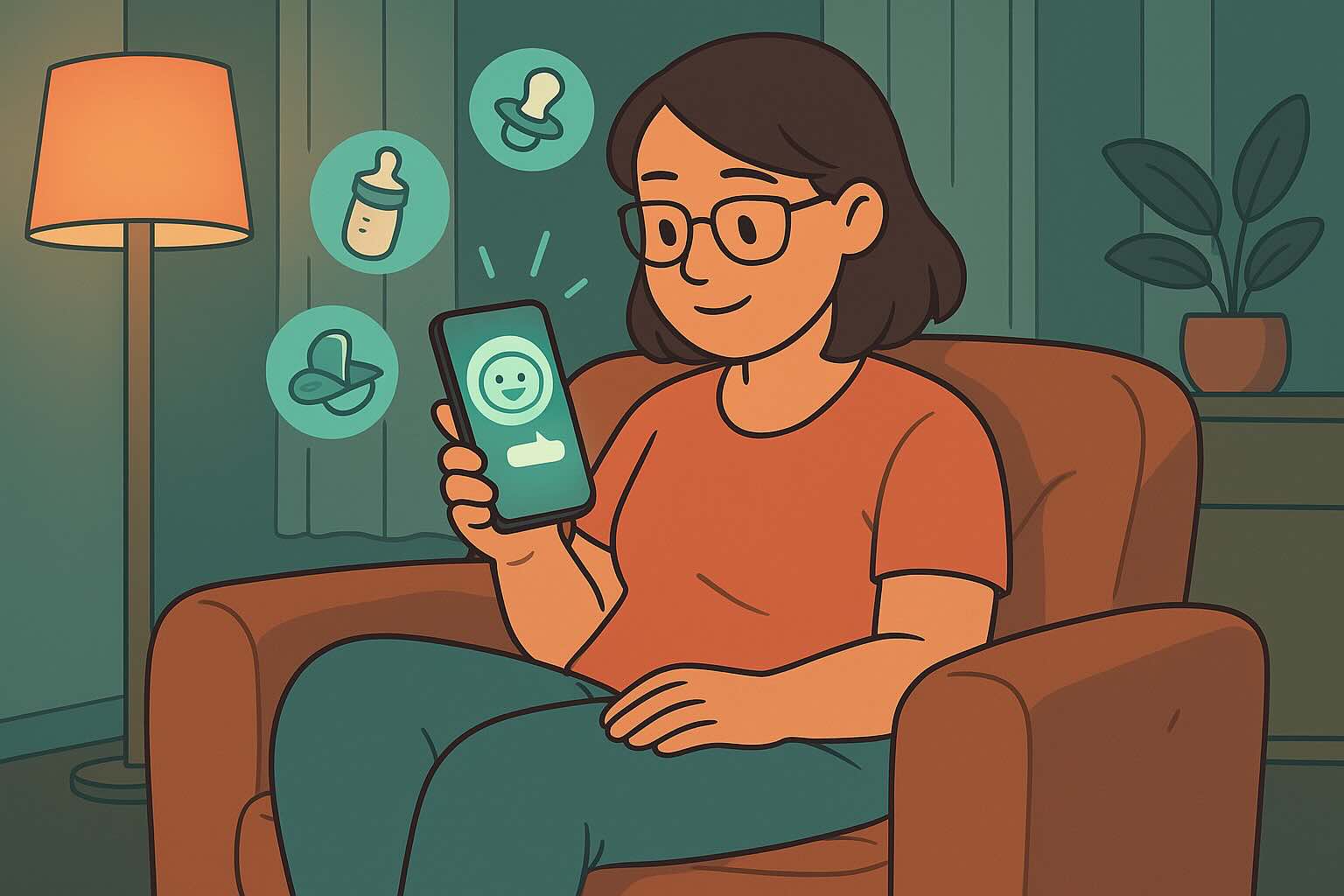
Boundary Setting Scripts
Set firm, loving boundaries without punishment using evidence-based scripts and strategies that build cooperation and respect.
Frequently Asked Questions
Need personalized support?
RootWise's AI coach can provide tailored strategies for your specific situation, available 24/7 when you need it most.
Learn More About AI Coaching →